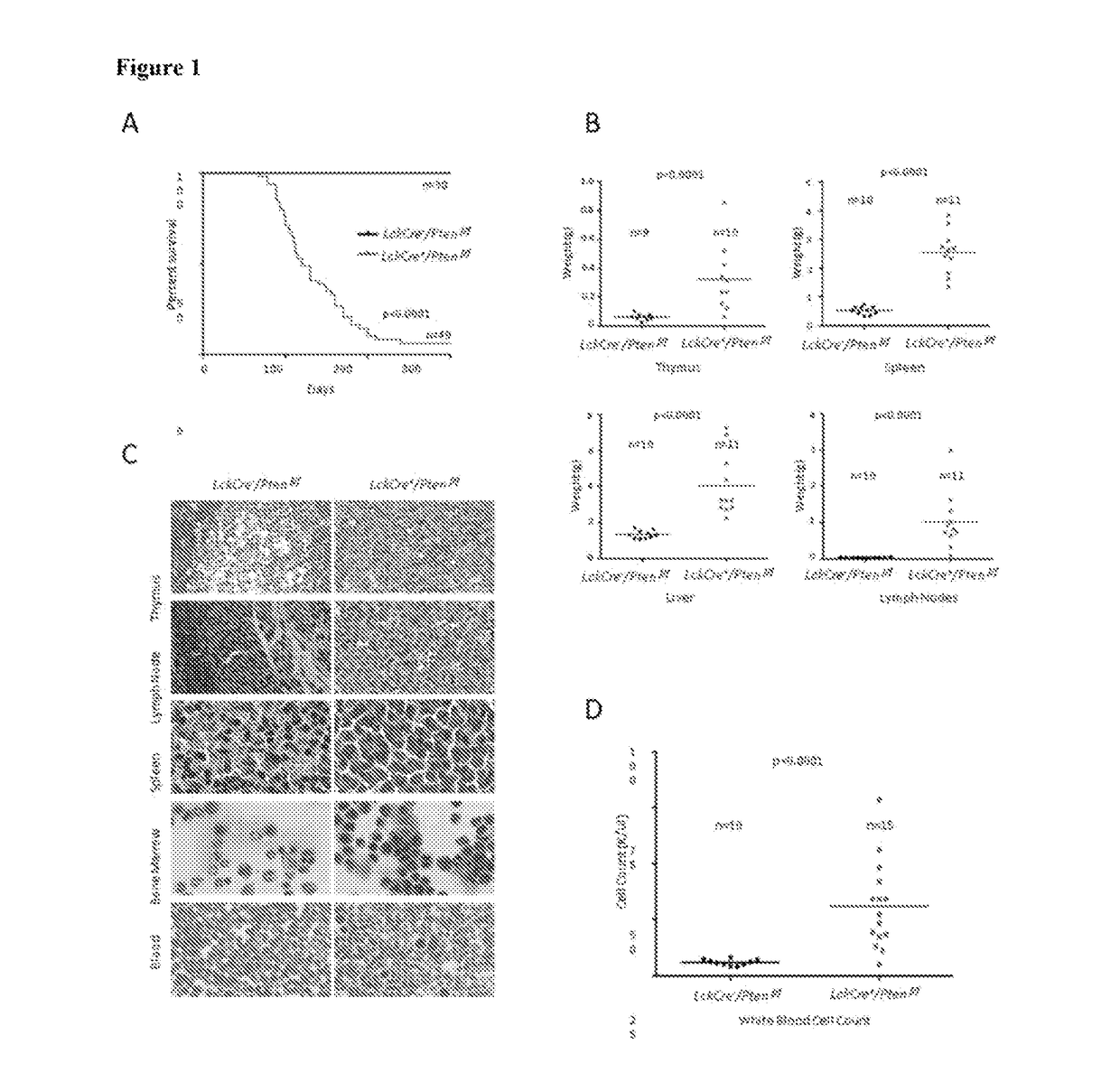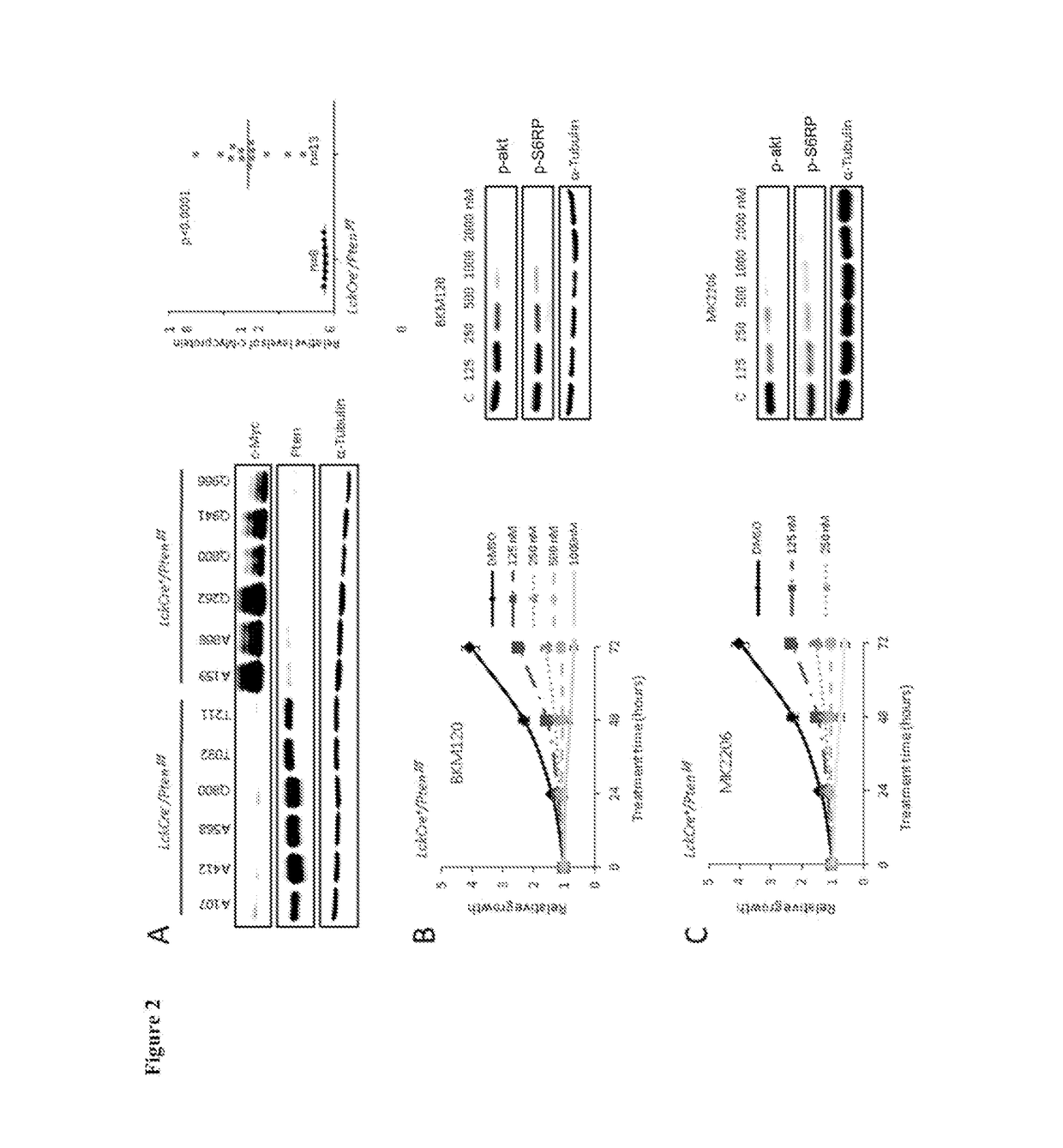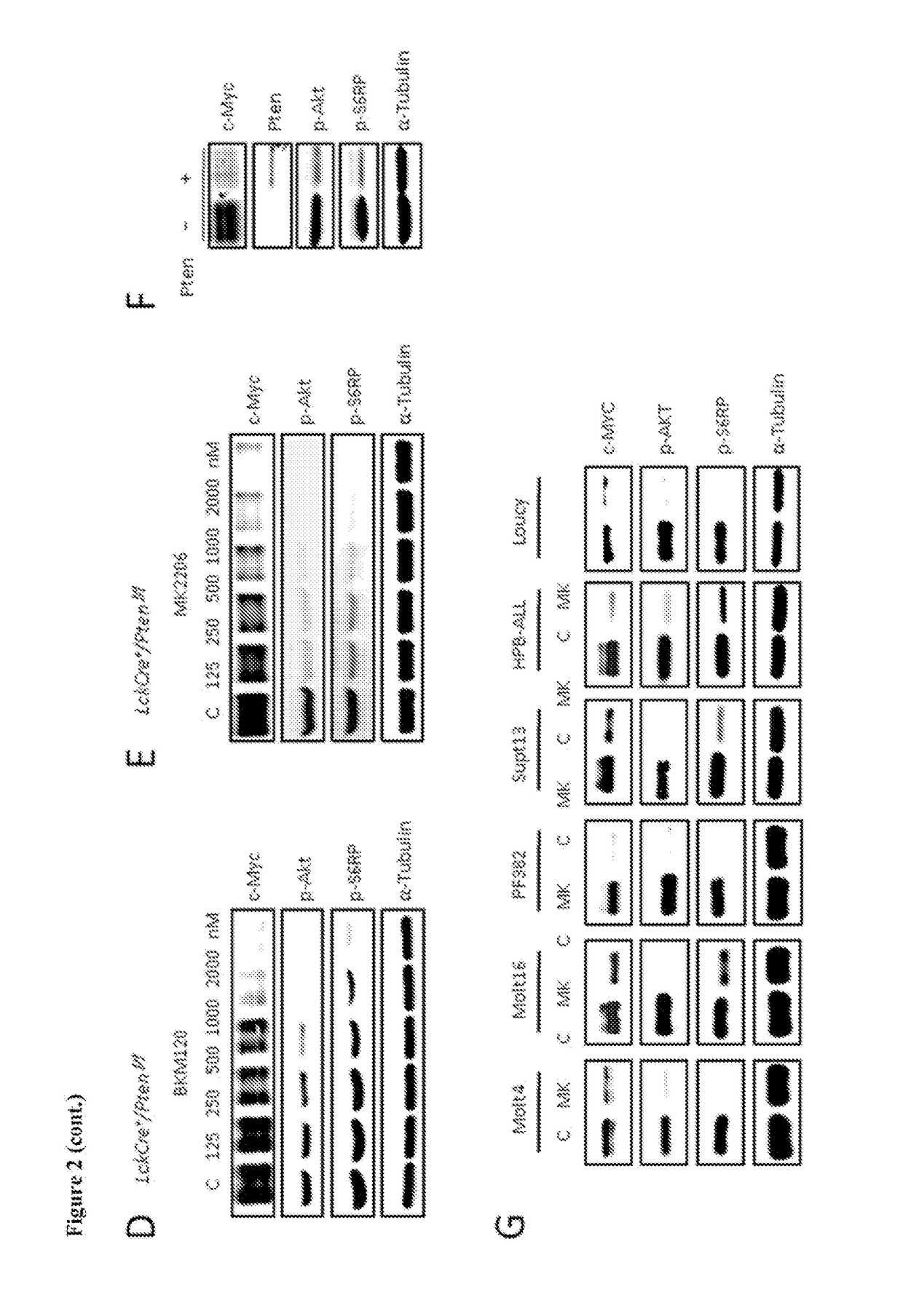P13k-mtorc1-s6k1 signaling pathway biomarkers predictive of Anti-cancer responses
a signaling pathway and anti-cancer technology, applied in biochemistry equipment and processes, instruments, material analysis, etc., can solve the problems of challenging direct targeting of c-myc via pharmacological agents, and achieve the effect of reducing the amount or activity
- Summary
- Abstract
- Description
- Claims
- Application Information
AI Technical Summary
Benefits of technology
Problems solved by technology
Method used
Image
Examples
example 1
Materials and Methods for Examples 2-7
[0337]a. Mice
[0338]LckCre (Hennet et al. (1995) Proc. Natl. Acad. Sci. U.S.A. 92:12070-12074) and Ptenf / f (Lesche et al. (2002) Genesis 32:148-149) mice were crossed to generate experimental mice for this study. All animals were housed and treated in accordance with protocols approved by the Institutional Animal Care and Use Committees at Dana-Farber Cancer Institute and Harvard Medical School.
[0339]b. Cell Lines and Cell Culture
[0340]Hematological cancer cell lines were cultured in RPMI (Life Technologies) supplemented with 10% FBS (Life Technologies) and 1% Pen / Strep (Life Technologies). CAMA1 and T47D were cultured in DMEM (Life Technologies) supplemented with 10% FBS and 1% Pen / Strep. Primary cell lines were established from isolated thymocytes of moribund LckCre+ / Ptenf / f mice and cultured in RPMI supplemented with 10% FBS and 1% Pen / Strep.
[0341]c. Chemicals
[0342]The following small molecule inhibitors were used in the studies described here...
example 2
Pten-Null Driven T-ALL with Over-Expressed c-Myc is Sensitive to PI3K / AKT Inhibition
[0362]To identify novel regulatory mechanisms governing expression of the c-Myc oncoprotein that could potentially be clinically relevant, a murine T cell tumor model that is initiated by loss of Pten (Hagenbeek and Spits (2008) Leukemia 22:608-619) was used. PTEN is a critical tumor suppressor functioning as the antagonist of PI3K signaling, and its inactivation results in hyperactivation of the serine / threonine kinase AKT, which in turn triggers multiple signaling pathways to regulate cell growth, survival, and metabolism (Engelman (2009) Nat. Rev. Cancer 9:550-562). Notably, several T cell tumor models initiated by Pten-loss have been reported to almost invariably feature c-Myc over-expression (Guo et al. (2008) Nature 453:529-533; Liu et al. (2010) J. Clin. Invest. 120:2497-2507; and Zhang et al. (2011) Leukemia 25:1857-1868). The resulting disease closely resembles its human counterparts that al...
example 3
The PI3K / AKT Activity Controls the Amount of c-MYC Protein Expressed in PTEN-Deficient T-ALL
[0365]In order to determine whether c-Myc levels in Pten-null driven T-ALL are altered in response to PI3K or Akt inhibition, primary tumor cells isolated from moribund LckCre+ / Ptenf / f mice were treated with either BKM120 or MK2206, and then the protein abundance of c-Myc was measured. Notably, both PI3K and AKT inhibitors dramatically decreased the abundance of c-Myc protein in these cells in a dose-dependent manner (FIGS. 2E-2E). Furthermore, restoring the expression of Pten in these primary Pten-null T-ALL cells greatly reduced the abundance of c-Myc protein as well as the phosphorylation of both Akt and S6RP (FIG. 2F). These data indicate that the PI3K / Akt signaling pathway tightly controls the abundance of c-Myc protein in this T-ALL model driven by Pten-loss.
[0366]These findings were extended to human T cell lymphoma / leukemia cell lines. A panel of T cell lymphoma or T-ALL cells was scr...
PUM
| Property | Measurement | Unit |
|---|---|---|
| pH | aaaaa | aaaaa |
| temperatures | aaaaa | aaaaa |
| diameter | aaaaa | aaaaa |
Abstract
Description
Claims
Application Information
 Login to View More
Login to View More - R&D
- Intellectual Property
- Life Sciences
- Materials
- Tech Scout
- Unparalleled Data Quality
- Higher Quality Content
- 60% Fewer Hallucinations
Browse by: Latest US Patents, China's latest patents, Technical Efficacy Thesaurus, Application Domain, Technology Topic, Popular Technical Reports.
© 2025 PatSnap. All rights reserved.Legal|Privacy policy|Modern Slavery Act Transparency Statement|Sitemap|About US| Contact US: help@patsnap.com



